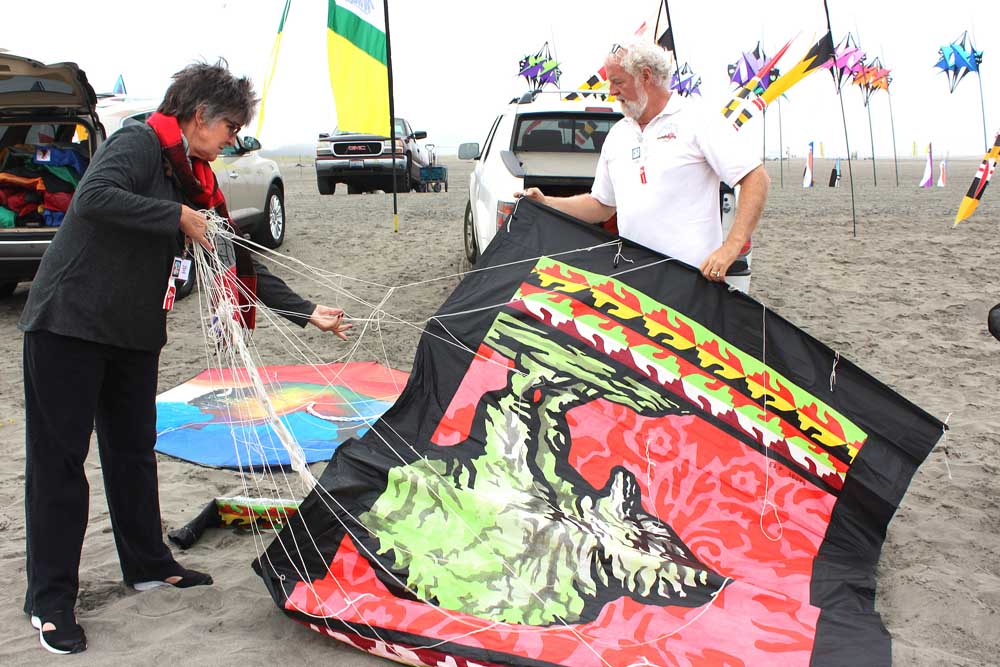Kites elevate Native American art
Published 6:40 am Wednesday, August 30, 2017

- While setting on their exhibit, Terry Lee Zee, left, and Drake Smith untangle the strings of a kite featuring a design by Oglala Lakota artist Angela Babby at the Washington State International Kite Festival in Long Beach Wednesday. This kite was one of 14 representing artists from nine tribes on show at the festival.
The 2017 Washington State International Kite Festival featured a colorful, artistic display which came with a history lesson.
It was brought to Long Beach by two visitors who travel the world highlighting Native American artwork painted on kites.
Terry Zee Lee and her partner, Drake Smith, from Billings, Mont., brought the Buffalo Jump kites, which commemorate a little-known aspect of Native American culture that pre-dates the arrival of the horse.
Their 14 kites flying over the Bolstad Avenue beach featured artists representing the Salish Kootenai, Crow, Northern Cheyenne, Cherokee, Sioux, Caddo, Oglala Lakota, Metis, and Navajo.
The jumps were a method of harvesting meat and hides that became obsolete when the need to graze horses transformed many tribal cultures into nomadic lifestyles.
“Before the horse came to North America with the Spanish, the people here had to slow down the buffalo,” Lee said. “They would select the fastest young man to lead them — it was a great honor. These were 13-, 14-, 15-, 16-year-olds. They would be taught to bleat like a baby calf trying to locate its mother, then crawl into the herd with a skin on top of them and start them moving towards the jump. They were very agile and would line them into an alley.”
More than 200 buffalo jump sites have been discovered in the Western states and Canada. At the last moment, the runner would dive into a prepared hiding place to avoid being trampled, although one jump site in southern Alberta, Canada, is named Head Smashed In, because the body of a boy was discovered amid the buffalo bones.
Once the buffalo had tumbled over the cliff, the tribal members would set up what amounted to assembly lines in the canyon below to process almost every part of the carcasses for use by the tribe. The jump sites could only be used once every several years because live buffalo would avoid the location while the smell of the blood lingered. However, some sites that have been excavated have revealed as many as 30 layers of bones.
One kite showing some signs of wear featured a design by Blackfeet artist John Cadotte. It was being flown by a novice during a children’s program near the Bighorn Mountains of Montana earlier this year when the youngster let go of the string and the kite flew miles away, prompting a lengthy region-wide search until it was discovered several miles away, Lee said.
“It was great that all these kids put down their telephones and get on horses and four-wheelers,” she said. “They went all over the foothills looking for it.”
Neither Lee nor Smith are of Native American heritage, but Lee grew up in the Western states with a mother who especially encouraged an awareness of their culture. They delight in sharing the work of the artists, many of whom live in reduced circumstances.
“It is a great way to promote their art. They own the art, we own the kites,” said Smith, who also has a Lewis and Clark-themed kite display. “It’s a wonderful hobby for getting to see places all around the world.”
‘It is a great way to promote their art.’
— Drake Smith
describing kite project




